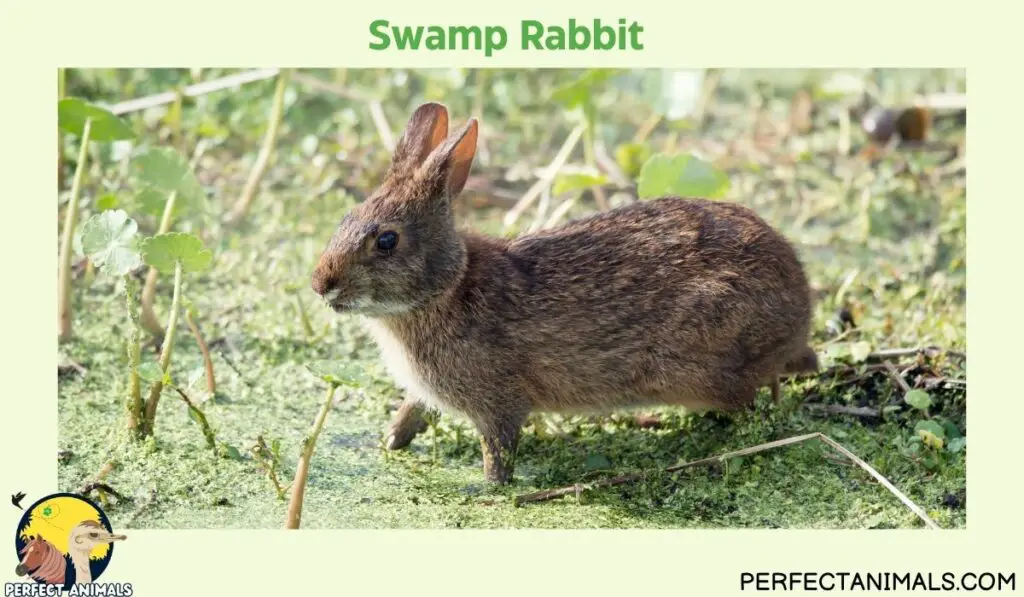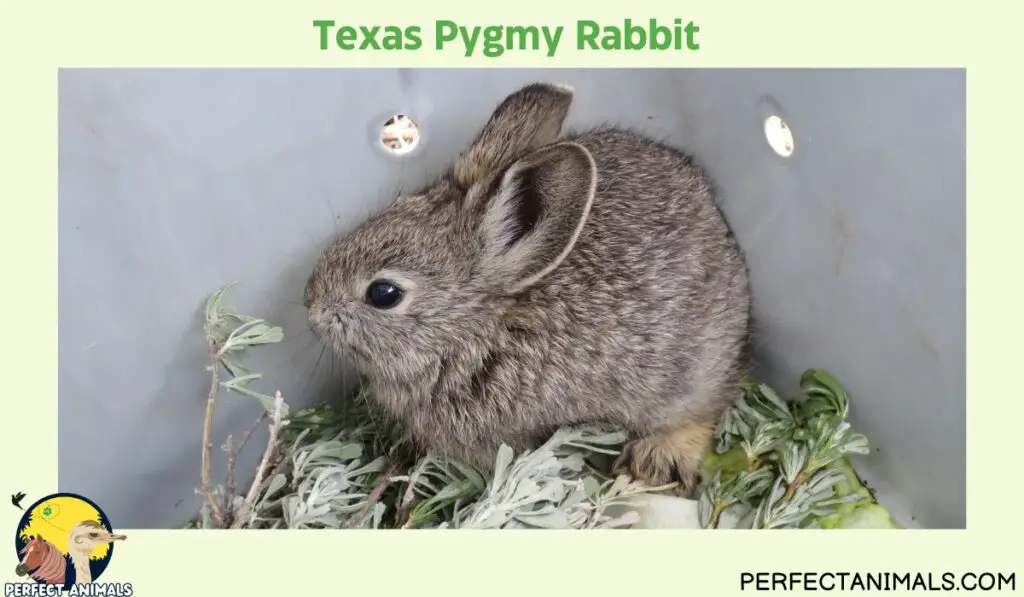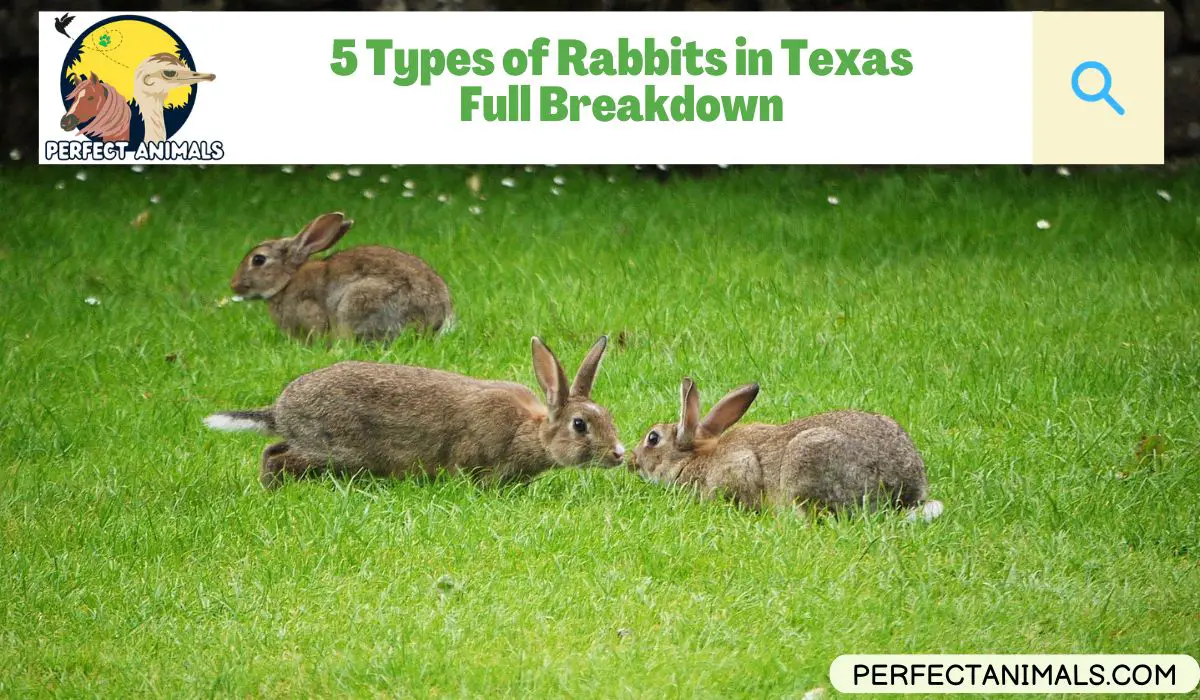Texas is home to a diverse array of wildlife, including a number of different rabbit species that hop around the state.
Rabbits can be found living in deserts, forests, swamps, grasslands, and backyards across Texas.
Some are small like the Texas Pygmy Rabbit, while others like the Black-tailed Jackrabbit have very long ears and hind legs suited for speed.
In this article, we will discuss the most common types of wild and domesticated rabbits found in Texas.
We will also provide information on rabbit hunting regulations and seasons in Texas for those interested in harvesting rabbits.
Finally, we’ll give some tips for safely and humanely preparing rabbit meat to eat.
Whether you’re a nature enthusiast, hunter, or chef, read on to learn all about rabbits in the Lone Star State!
Types of Rabbits in Texas
Eastern Cottontail (Sylvilagus floridanus)
The Eastern Cottontail is one of the most commonly spotted rabbit species across Texas.
With its endearing appearance and widespread presence, this species thrives in various habitats, including grasslands, forests, and urban areas throughout the state.

Recognizable by its small to medium size, the Eastern Cottontail boasts a reddish-brown fur coat that camouflages well within its surroundings.
What distinguishes this charming rabbit is its distinctive white cotton-like tail, often visible as it scampers through the underbrush.
Their diet primarily consists of grasses, clover, and other vegetation, contributing to their adaptability in diverse landscapes.
These resilient rabbits play a vital role in the ecosystem, serving as prey for numerous predators and aiding in seed dispersal.
Their ability to adapt to human-altered environments has made them a familiar sight to many Texans, enhancing the enchantment of encountering wildlife within the state’s borders.
Related Article – Deer in North America
Desert Cottontail (Sylvilagus audubonii)
In the arid regions of Texas, the Desert Cottontail thrives, showcasing remarkable adaptations to survive in harsh desert environments.
Sporting a sandy-brown fur coat, this species has evolved to blend seamlessly with the desert landscape, enabling it to evade predators and find shelter amidst the sparse vegetation.

Their ears, longer than those of the Eastern Cottontail, aid in dissipating heat, a crucial adaptation for living in hot climates.
Much like their Eastern counterparts, Desert Cottontails primarily feed on a diet of grasses, cacti, and desert shrubs, showcasing their ability to find sustenance even in the most challenging terrains.
Their agility and swift movements allow them to navigate the rugged desert terrain with ease.
Although less frequently seen due to their preference for less populated areas, the Desert Cottontail remains an integral part of the Texan ecosystem, contributing to the biodiversity that makes the state so diverse.
Swamp Rabbit (Sylvilagus aquaticus)
The Swamp Rabbit, also sometimes called the Marsh Rabbit, is named for its affinity for swamps and marshy areas.
They live throughout the eastern third of Texas, preferring wetland habitats with dense vegetation.
Most common in coastal areas, Swamp Rabbits can also inhabit floodplains, wet meadows, swampy thickets, and damp forests.

These rabbits have soft, thick, brownish fur that helps repel the water of their damp homes.
They tend to be reddish-brown in color with gray undersides. Swamp rabbits have strong back legs like other rabbits suited for hopping through habitats with quick evasion.
Adults usually reach about 14-22 inches in length and 3-6 pounds in weight.
Swamp Rabbits are prolific breeders, allowing them to maintain stable populations.
They build nests made of grasses and leaves in depressions on the ground concealed by vegetation.
Females may have up to 6 litters per year with 3-6 young per litter.
Due to their wetland habitats, Swamp Rabbits help disperse plant seeds important for ecosystem health. Their population status is currently secure in Texas.
Related Article – Fascinating Foxes in Tennessee
Black-tailed Jackrabbit (Lepus californicus)
The Black-tailed Jackrabbit is one of the most common hares found in Texas. As their name suggests, they have prominent black fur on the outer surface of their tails and ears.
They also feature grayish-brown fur on their sides and back with whitish fur on their belly.
These hares prefer open habitats like prairies, plains, pastures, and desert scrublands.

They thrive in many areas of central, west, and north Texas where these types of ecosystems dominate.
Black-tailed Jackrabbits use their long legs and speed to bound across the landscape evading predators.
Adults can reach 18-25 inches long and weigh 5-10 pounds.
A key factor that allows Black-tailed Jackrabbits to thrive is that females can breed year-round in suitable conditions.
They build nests called forms concealed on the ground rather than in burrows. Females often have up to 4 litters per year with around 4 young per litter.
Jackrabbits are an important food source for many Texas predators.
Their populations fluctuate but remain secure overall in the state.
Texas Pygmy Rabbit (Brachylagus idahoensis)
As their name hints, the Texas Pygmy Rabbit is a very small rabbit species native to areas of West Texas.
They are one of the smallest rabbit species in North America, weighing under 2 pounds as adults.
Their fur ranges from gray to tan or brown.

Texas Pygmy Rabbits are found in patches of dense shrubs and grasses surrounding desert scrub or sagebrush habitats.
This environment with dense vegetation provides them cover from predators like hawks, snakes, and coyotes.
They are most active at night when they venture out to graze on sagebrush and other shrubs near their burrows.
Due to the loss of habitat, the Texas Pygmy Rabbit population has declined significantly from its historic range.
They now only inhabit about 5% of their original territory in Texas with two small distinct population pockets along the Mexico border.
Conservation efforts are underway to preserve the remaining pygmy rabbit sagebrush habitat in Texas.
Their specialized habitat preferences and small litter make the species vulnerable.
Continued habitat conservation will be crucial to prevent the Texas Pygmy Rabbit from requiring endangered species protections.
You May Also Like – Armadillos In Tennessee
Is It Illegal to Hunt Rabbits In Texas?
In Texas, hunting rabbits is a popular outdoor activity, and the state regulations allow for their hunting during specific seasons.
As of the last update, hunting seasons and regulations for rabbits are established by the Texas Parks and Wildlife Department (TPWD).
These regulations stipulate the permissible dates for hunting different species, bag limits (the maximum number of rabbits that can be hunted per day), and other specific guidelines that hunters must adhere to.
Rabbits are classified as “game animals” in Texas, and their hunting seasons typically coincide with other small game seasons.
However, it’s crucial for hunters to stay informed about any updates or changes in regulations regarding rabbit hunting by regularly checking the TPWD website or consulting official hunting guides provided by the department.
Additionally, obtaining a valid hunting license is a prerequisite for engaging in rabbit hunting in Texas, adhering to state laws that regulate hunting activities across the state.
It’s vital for individuals intending to hunt rabbits or any other game species in Texas to familiarize themselves with the current TPWD guidelines to ensure compliance with the law and contribute to the conservation efforts aimed at maintaining healthy wildlife populations.
When Can You Eat Rabbit In Texas?
Rabbits are a popular small game animal pursued by hunters in Texas for their meat.
The cottontail rabbit hunting season generally runs from October 1st to February 28th statewide.
The season for swamp rabbits and jackrabbits also opens on October 1st but closes a month later on March 31st.
These seasons for hunting rabbits apply statewide across Texas.
During these rabbit hunting seasons, those with a valid Texas hunting license are able to harvest rabbits in accordance with state bag and possession limits.
The daily bag limit for cottontails and swamp rabbits is 5 per day with 15 in possession at a time.
For jackrabbits, hunters can harvest 10 per day with 30 in possession.
In addition to the hunting seasons, domesticated rabbits can be harvested for meat year-round on farms for personal or commercial use following USDA processing regulations.
Rabbits make a tasty, lean meat that can be prepared in a variety of ways including roasted, braised, fried, or cooked into stews and chilies.
They are best harvested in cooler months like late fall into early spring.
Follow proper game handling procedures to safely consume wild rabbits in Texas.
You May Also Like – Discover 12 Crabs in Florida
Final Thoughts
Texas has a diverse population of wild rabbits across various regions of the state.
Backyard bird watchers may catch a glimpse of an Eastern Cottontail munching on vegetables from their garden.
Desert enthusiasts may spot the speedy Black-tailed Jackrabbit bounding through scrubland.
And those exploring east Texas wetlands and swamps may flush out a Swamp Rabbit from streamside thickets. Each species plays an important role in the ecosystem.
For hunters and wild game cooks, rabbits provide ample opportunities to pursue small game during designated hunting seasons.
Their lean meat can be prepared in many delicious ways. When harvesting rabbits, follow ethical hunting practices and adhere to state regulations on seasons, limits, licensing, and game handling.
While some species like the Texas Pygmy Rabbit struggle with low populations, many other rabbits in Texas remain abundant to be appreciated by nature lovers.
Protecting habitats like sagebrush and wetlands will help conserve vulnerable rabbit populations over the long term.
Through ethical hunting and habitat conservation, Texans can continue enjoying the diverse community of rabbits hopping across the Lone Star State.
Resources – (for further reading)
Texas Parks and Wildlife Department (TPWD) – Hunting
Texas Parks & Wildlife Magazine – HUNTING FOR A PLACE TO HUNT?
Wikipedia – List of rabbit breeds

Jesse is a dedicated animal keeper at Lincoln Park Zoo, where he attends to the needs of various mammal species. His hands-on experience and knowledge about animal behaviors and conservation fuel his passion for writing about wildlife during his free time.

